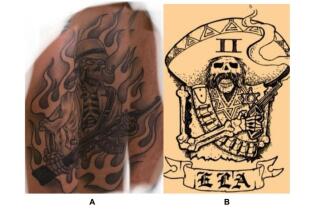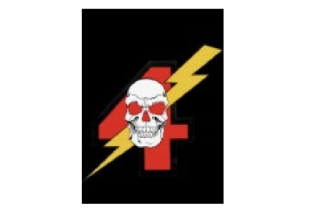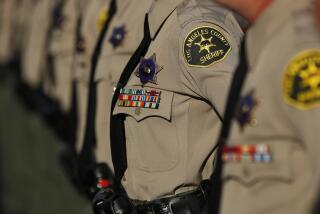Deputies involved in Christmas party brawl to be fired
The Los Angeles County Sheriffâs Department has begun termination proceedings against six deputies who were part of what officials are describing as an aggressive group that may have used gang-like hand signs to identify themselves before allegedly assaulting two fellow deputies at a Christmas party last year.
The firing of six deputies in connection with a single incident is one of the largest in the departmentâs history, officials said.
The men all worked on the third floor of Menâs Central Jail, where they allegedly were part of a clique that had certain gang-like characteristics, including three-finger hand signs, representing the third floor. Officials are looking at whether the deputies flashed their hand sign before their alleged assault on two deputies who work on another floor.
In addition to the termination proceedings against the six men, the department is now considering systemic reforms in jail assignments, such as more regular rotations to keep deputies from forming similar cliques.
Public records obtained by The Times show that deputies assigned to that floor of the jail had a higher number of use-of-force incidents against inmates during a recent four-year period than those assigned to any other floor at the downtown L.A. facility. Records show that between 2006 and 2010, the third floor recorded 437 use-of-force incidents, with the next closest floors trailing behind at 426 and 226.
Michael Gennaco, who heads a civilian watchdog agency overseeing the Sheriffâs Department, said the frequency of incidents on the third floor did not necessarily mean the force there was excessive because a âcertain pedigree of inmatesâ are housed there, largely those with more violent histories.
Whether the existence of a third-floor clique was known by supervisors before this incident is being looked at, Gennaco said. The group is believed to have formed within the jail, and thereâs no evidence to indicate any connection to an outside street gang, officials said.
The investigation into the men arose from a six-on-two assault that broke out last December outside a Montebello banquet hall where a Christmas party for jail employees was being held. Throughout the night, deputies assigned to the third floor, or 3,000 as it is known, were being hassled about being slow in moving inmates throughout the jail, Gennaco said. As the night wound down, one of the two deputies who was assaulted apparently called out to the group of six, again calling them slow.
The six deputies allegedly rushed that deputy and another standing nearby, and began punching and kicking them, Gennaco said. A female deputy who tried to break up the assault was punched in the face. Gennaco said several of the men had been drinking.
Sheriffâs spokesman Steve Whitmore declined to name the deputies, citing personnel constraints. A seventh deputy who was placed on leave after the incident was not fired because of insufficient evidence against him. Whitmore said the investigation into the men was thorough and included 180 interviews.
Prosecutors are reviewing possible criminal charges in connection with the incident.
âThe department chose not to wait for that,â Gennaco said. âWe have never seen this many deputies disciplined so severely in the 10 years weâve been here over one incident. Itâs unprecedented.â
The department has had problems with gang-like groups forming within its ranks before.
Secret subcultures with names like the Grim Reapers, the Vikings and the Little Devils have been connected to sheriffâs stations -- with their members often having matching tattoos. In one instance, a federal judge called one of those groups, the Lynwood Vikings, a âneo-Nazi, white supremacist gangâ that had engaged in racially motivated hostility. The county had to pay $9 million in fines and training costs in 1996 to settle claims.
Some, however, have characterized the groups differently, saying they exist to build cohesion and morale, and provide emotional support.
More to Read
Sign up for Essential California
The most important California stories and recommendations in your inbox every morning.
You may occasionally receive promotional content from the Los Angeles Times.










